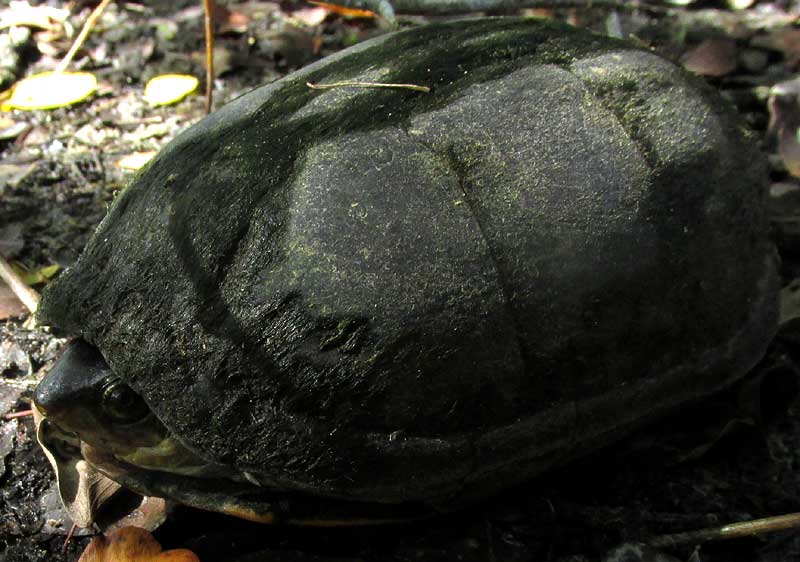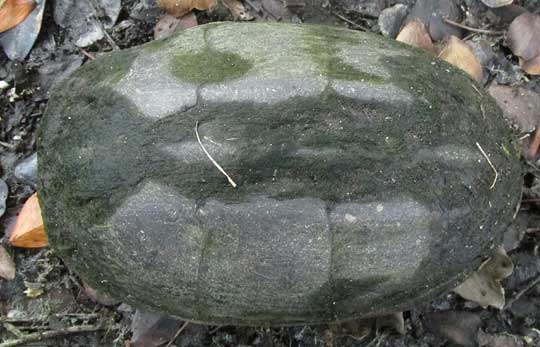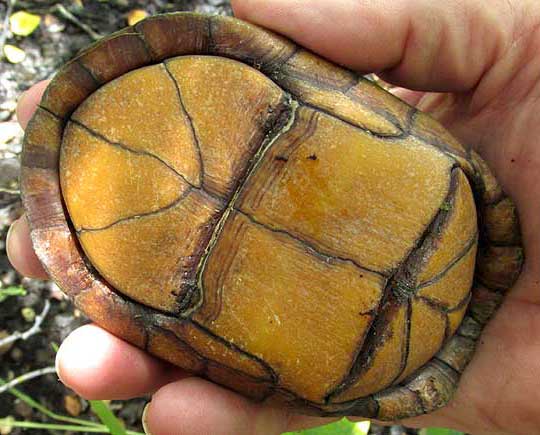Excerpts from Jim Conrad's
Naturalist Newsletter

from the December 14, 2014 Newsletter issued from Río Lagartos, on the Yucatan Peninsula's northern coast (~N21.60°, ~W88.16°), Yucatán state, MÉXICO
WHITE-LIPPED MUD TURTLE
On the highway he looked like something fallen from a car engine so when I circled the bike to take a look I nudged him with my foot, thinking I'd hear a metallic scrape, but instead there was a hollow sound, like something hard with guts inside. Then I noticed that he was wet and covered with algae. He was a turtle, and he needed saving from the next car coming along. Below, you can see him in his closed-up shell safe on the ground next to a pond away from the road:

The shell was higher and narrower than those of most turtles. At the far left side of the above picture, notice the nose beginning to poke from the shell. That's a particularly narrow and pointy nose. That and his narrow, high shell and his stinky smell were good field marks, but I still wanted to see the rest of his body for a solid identification.
Theoretically a human can outwait any turtle withdrawn into his shell, but that's without mosquitoes. As I waited and his head poked more and more from his shell, dozens of mosquitoes settled on me. The moment I'd brush them off, in would go his head. After several attempts at waiting for him to completely come out my best shot, still not showing much, was the one shown atop this page.
That's enough, though, to see the whitish lower lip, which is an important feature. Eventually it became clear that the mosquitoes were going to win, so I just flipped him over to get a good shot of the scale, or "scute," pattern on his lower surface, his plastron, shown below:

Mainly by comparing the plastron's scute pattern with pictures of turtle plastrons on the Internet, our little highway turtle revealed himself to be a White-lipped Mud Turtle, KINOSTERNON LEUCOSTOMUM, found from southern Mexico south through Central America into northern South America as far as Ecuador.
White-lipped Mud Turtles mostly occur in humid, swampy areas with standing or very slowly moving water, including brackish water. They feed on insects, mollusks, dead fish and other carrion, and sometimes fruit and other plant matter.